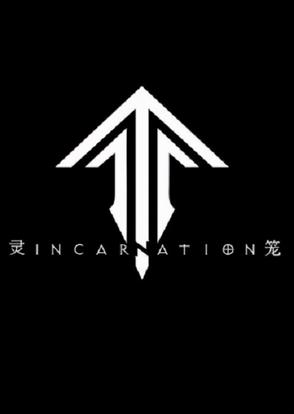个人履历
Adolf Butenandt(1903年3月24日—1995年2月18号)
全名
:Adolf Frederick Johann Butenandt布特南特在马尔堡大学学习,其后在格廷根大学温道斯的指导下工作,并于1927年获得化学博士学位。三年之后他是那里的有机化学实验室主任。布特南特突出的工作是分离性激素和鉴定其结构。第一个被分离出来的性激素是雌酮,这是布特南特在1929年从怀孕妇女的尿中得到的。它是卵巢细胞分泌出来的少量几种物质之一,这些物质是促进妇女性成熟的。1931年布特南特分离出雄性甾酮,这是睾丸细胞产生的一种重要的男性激素,它对男人所起的作用如同雌酮对妇女所起的作用一样。布特南特只用了15毫克的雄性甾酮,由于采用了普莱格尔所用的微量分析法,得以对这些元素作了两次分析,而且还制出这个化合物的一种变体并分析了它。这足以使布特南特有可能推导出这个化合物的分子式。1934年卢齐契加根据布特南特的结构见解合成了一种类似的化合物,发现合成的产物完全具有雄性甾酮的性质,因此证实布特南特的探索工作是正确的。1934年布特南特分离了另外一种对于妊娠过程中的化学机理具有十分重要作用的女性激素---孕甾酮。1936年布特南特担任柏林威廉皇家生物化学研究所所长,1939年他与卢齐卡(Leopold Ruzicka 1887—1976)分享了诺贝尔化学奖。如同那年另一位德国人多马克以及一年前库恩得到诺贝尔奖时的情况一样,纳粹政府强迫布特南特拒绝接受这笔奖金。直到第二次世界大战结束和希特勒完蛋后,他才于1949年接受了这一荣誉。战后他在图宾根大学任教,1956年之后在慕尼黑大学教书。1960年他继哈恩之后任马克斯·普朗克学会主席。
英文介绍
Adolf Frederick Johann Butenandt was born on March 24, 1903 at Bremerhaven-Wesermünde. The son of a business man Otto Butenandt of Hamburg, he went to school at Bremerhaven and studied chemistry at the Universities of Marburg and Göttingen. In 1927 he graduated at the University of Göttingen, where he had studied under Adolf Windaus.
From 1927 until 1930 he was Scientific Assistant at the Institute of Chemistry, Göttingen, and from 1931 until 1933 he was Privatdozent in the Department of Biological Chemistry at the University of Göttingen and acting Head of the laboratories for organic and inorganic chemistry. He then became Professor Ordinarius and Director of the Institute for Organic Chemistry at the Institute of Technology at Danzig, a post which he held until 1936.
From 1936 until 1960 he was Professor in the University of Berlin and Director of the Max Planck Institute for Biochemistry, Berlin-Dahlem, which later moved to Tübingen and then to Munich. From 1945 until 1956 he was Professor of Physiological Chemistry at Tübingen and in 1956 he became Professor of Physiological Chemistry in the University of Munich. From 1956 until 1960 he was Director of the Institute of Physiological Chemistry in the University of Munich.
Since 1960 he has been President of the Max Planck Society at Munich.
Butenandt's name will always be associated with his work on sex hormones, for which he was awarded, jointly with Leopold Ruzicka, the Nobel Prize for Chemistry for 1939. In 1929 he isolated oestrone in pure, crystalline form, almost at the same time that E.A. Doisy did this in America. In 1931 he isolated androsterone in pure, crystalline form. From androsterone he as well as Ruzicka, independently of each other, obtained testosterone in 1939, a compound which had been obtained from the testes in 1935 by Ernst Laqueur. Progesterone was isolated by Butenandt from the corpus luteum in 1934.
In addition to these researches, Butenandt carried out much investigation of the interrelationships of the sex hormones and on the possible carcinogenic properties of some of them. His work on the sex hormones was largely responsible for the production of cortisone on a large scale.
A great number of honours and distinctions was bestowed upon him. He was awarded several medals and prizes from Germany, France, Sweden and England, he received the Grand Cross for Federal Services with Star (1959), he holds six honorary doctorates (Munich, Graz, Leeds, Madrid and two from Tübingen) and is Freeman of the city of Bremerhaven. He is corresponding member of the Academy of Sciences at Göttingen, honorary life member of the New York Academy of Sciences, and honorary member of the Japanese Biochemical Society, the Deutsche Akademie der Naturforscher Leopoldina, Halle, and the Austrian Academy of Sciences.
He married Erika Ziegner in 1931; they have seven children and live at Munich-Obermenzing.
From Nobel Lectures, Chemistry 1922-1941, Elsevier Publishing Company, Amsterdam, 1966
This autobiography/biography was first published in the book series Les Prix Nobel. It was later edited and republished in Nobel Lectures. To cite this document, always state the source as shown above.
Adolf Butenandt died on January 18, 1995.
睾酮
1931年德国化学家布特南特(Adolf Frederick Johann Butenandt)从睾丸里分离出一种雄性激素——睾酮,后来确认是从睾丸的间质细胞产生的。它对男人所起的性征作用如同雌酮对妇女所起的作用一样。1934年卢齐契加根据布特南特的结构见解,合成了一种类似的化合物,发现合成的产物完全具有睾酮的性质,因此证实布特南特的探索工作是正确的。1939年他们两人获诺贝尔化学奖。
雄、雌性激素影响免疫系统的方式及其分子机制:性激素作用于免疫系统的三种方式是:(1)改变T、B细胞表型和细胞功能;(2)影响Ig水平及Ig合成动力学;(3)影响细胞因子的合成,进而增强或削弱免疫应答。
性激素发挥作用的共同分子机制为:游离性激素经被动扩散进入靶细胞,与特异性受体结合形成复合物,经过一系列变化,受体分子激活,而后与特异DNA片段呈高亲和力结合,该片段作为转录因子转录相应的核糖核酸(mRNA),进而翻译为活性蛋白质,产生生物效应。免疫器官中雄性激素受体的存在尚有争议,但已证实人胸腺细胞、T淋巴细胞和滑膜内巨噬细胞有雌激素受体。
早在公元前1500年人们就注意到动物和人的胸腺,但是却不知道它存在的意义。1961年澳大利亚免疫学家米勒(J.F.A.P.Miller)发现胸腺淋巴细胞的免疫功能。认为胸腺是培育T淋巴细胞的中央淋巴器官。
到上世纪70年代人们注意到胸腺的生长发育随动物和人的生长发育而发生的形态和功能变化。进而通过试验证明:雄、雌激素均可诱导和外周淋巴器官的萎缩,而雄、雌性动物去势后均可出现胸腺和脾脏增生。这预示,雄、雌性激素可能对免疫有抑制作用。
到上世纪80年代,由于临床流行病学证据显示,女性更容易患自身免疫性疾病,所以普遍认为雌激素能加强免疫应答,而雄性激素则抑制免疫应答。
1987年山东大学杨帆和他的导师王龙的研究报告显示:雄性激素对免疫功能的作用表现出剂量-效应关系,即:睾酮高剂量时,表现出促进B淋巴细胞产生抗体的作用;睾酮低剂量时,表现T淋巴细胞转化和巨噬细胞功能有明显变化;而切除睾丸后,动物的T淋巴细胞转化率明显提高,B淋巴细胞抗体生成和巨噬细胞的吞噬功能没有变化。因此,这两位学者提出:“不能笼统地说雄性激素对免疫机能有促进作用还是抑制作用,必须注意到使用激素的量以及采用多方面的指标才能说明对免疫机能的确切作用。”
1989年冬天,迟阿鲁使用甲基睾丸素(一种合成的雄性激素)治疗感冒(未病因诊断,只做过血常规检查),对成年人,甲基睾丸素1天服用3次,1次1片。接受治疗的病人多在服药1—2天症状消失。1992年他撰写了病例报告发表在《山东医药》第10期。他我采用该激素治疗慢性鼻炎、慢性支气管炎都有明显的疗效。
上世纪90年代,雄性激素对免疫功能调节的实验研究和临床报告逐渐增多,国外已有很多报告显示:采用雄性激素治疗艾滋病是有效的。有的报告显示:病人的CD4细胞数量增加。
2003年SARS在国内流行期间,迟阿鲁向有关部门和专家建议:适量采用雄性激素治疗SARS,为的是提高病人免疫力,还可以改善症状,减轻肺部炎症反应等。4月24日《中国医学论坛报》发表了他的建议。之后,《健康报》在发表治疗SARS的医疗专业人员的文章时,其治疗综述中提到了采用雄性激素的问题。
越来越多的文献显示,雄性激素对免疫功能的调节,存在剂量-效应的异质性。相信,随着对雄性激素的认识深入,它定会发挥更广泛的医疗作用。






